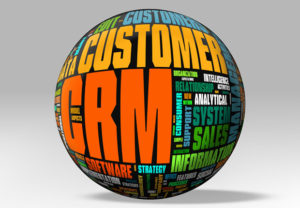
For many years, one of the big concerns of the cloud software industry has been ensuring that the user experience was as good for enterprise software users as it was for consumers on big websites like Amazon. That has been a good motivator because today’s apps on both desktops and mobile devices have seen major improvements.
That applies to today’s partner ecosystem as well, and Salesforce has responded with new tools that give partners using the AppExchange consumer-level functionality for finding service providers as well as apps. The company also has announced solutions that help partners manage their book of business.
Better Connections
Perhaps the easiest way of understanding these announcements is through example and comparison. If you’ve ever needed a plumber or other tradesperson’s services, you know how difficult it is to hire from the phone book today. Many tradespersons work off their cellphones and keep inconsistent notes, resulting in failed contacts and missed opportunities.
To solve that problem, entrepreneurial businesses like Angie’s List and HomeAdvisor built systems that enable small vendors to offer their services along with reliable connections that result in callbacks, meetings, and job completions. That’s part of what Salesforce did this week.
The company now provides a way for customers to find and connect with experts beyond listings in the AppExchange. At the same time, Consultants on AppExchange enable vendors to declare their expertise so that customers searching for specific accomplishments and experience can find them easily.
This solves the problem of trying to hire by calling numbers in the Yellow Pages. Not saying YP is bad — just that it’s been superseded by Angie and company. In the same way, AppExchange listings are now augmented, at least, by these new services.
Better Analytics
Another part of the announcement, AppExchange Partner Intelligence, now enables partners to gain insights into how visitors to the AppExchange interact with the information that vendors post.
There are two analytics offerings that make this possible. AppExchange Marketplace Analytics, powered by Einstein Analytics, provides information on how visitors to the AppExchange reach and engage with an AppExchange listing.
The analytics also can show how often customers engage with various high-conversion buttons like “Save” and “Get it now.” With that data, vendors can determine the effectiveness of their content and messaging.
AppExchange App Analytics enables independent software vendor partners to track app adoption and analyze usage data to uncover trends and influence roadmap decisions. It’s another way to understand how customers engage with content on the AppExchange, which will drive sales and marketing discussions.
Some of the products are in market, such as Consultants on AppExchange. AppExchange Marketplace Analytics will be available shortly with the Summer 2019 release. AppExchange partners will get AppExchange App Analytics in June.
My Two Bits
With thousands of partners and apps on the AppExchange, it has become challenging to find the right consultant for a specific project. Consultants on AppExchange is good for end users because it makes finding a consultant more straightforward. It also gives customers a chance to evaluate competitors from a perspective that makes sense to them.
At the same time, AppExchange Partners takes some of the chaos out of the sales process for consultants. With analytics, it will be easier to manage a book of business with fewer resources because analytics takes some of the grunt work out of the equation.
About 10 years ago, there was a movement to produce applications generally described as “vendor relationship management,” or VRM. That category never got off the ground, in part because there were too many moving parts. There was no centralized way of consolidating vendor and customer information and no clear idea of who had operational responsibilities and who would pay the costs of running VRM.
These announcements from Salesforce take users part of the way to VRM, at least those in enterprises. They aren’t consumer tools, and the marketplace already has some, but it’s good to see the enterprise taking another page from the consumer playbook.
We should be working to remove friction from business transactions in every way possible, provided that means maintaining top-notch service. These announcements seem to strike that balance.
























































